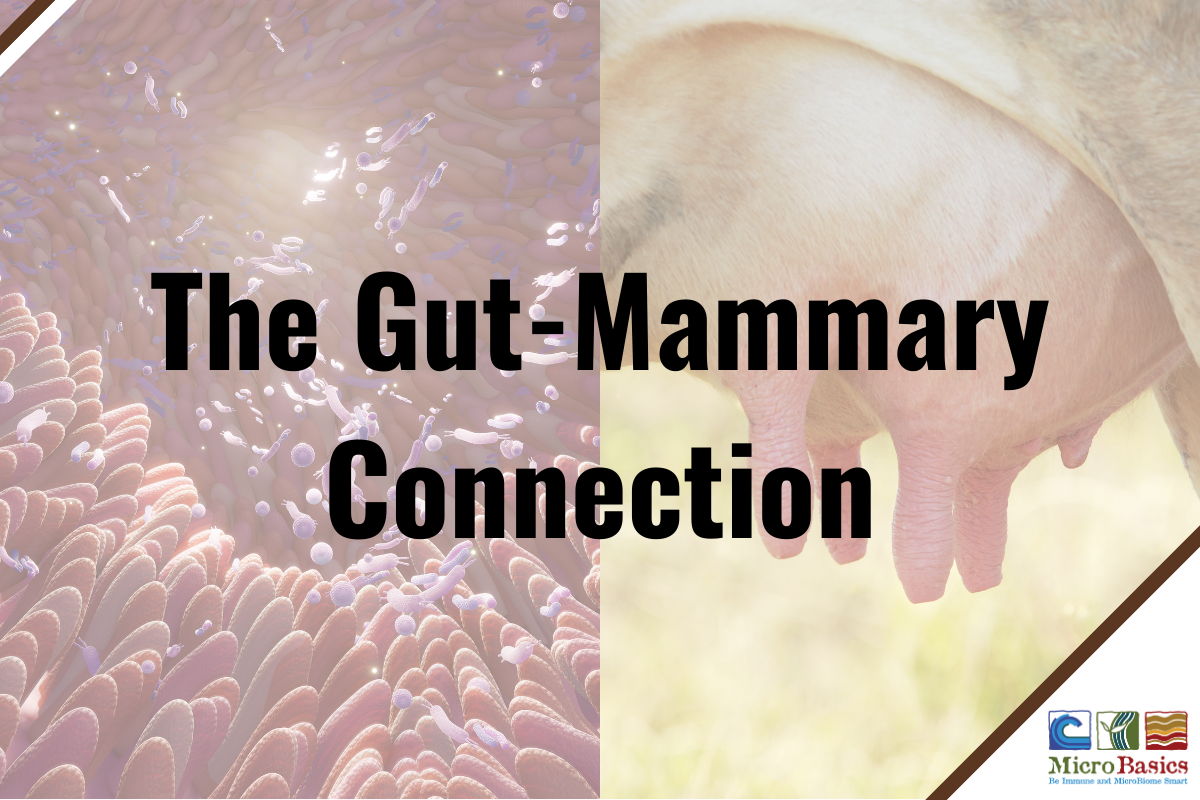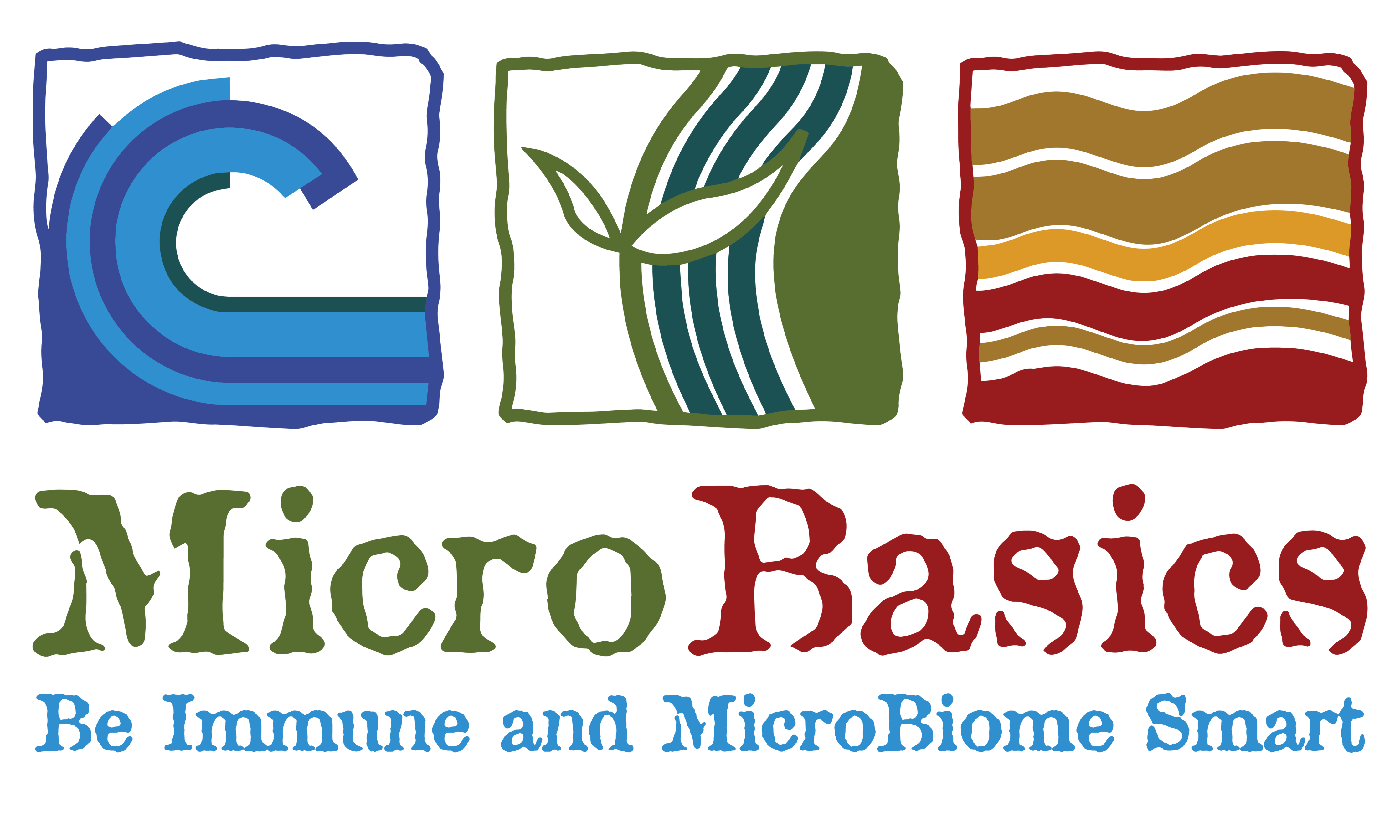
Gut-Organ Axes: The Gut-Mammary Connection
The final gut-organ axis that we will explore at this time is the gut-mammary axis. Within cattle production, the mammary gland is a major organ of importance not only for growth of young calves, but also in terms of saleable milk production.
Similarly to the gastrointestinal tract (GIT) and the respiratory tract, the mammary system is also inhabited by a community of microbes. Recent research concerning this microbiota has begun to suggest there is communication between the GIT microbiota and the mammary microbiota through a microbiome-gut-mammary-axis (MGMA).
Mammary Gland Environment
The microbiota of milk includes commensal organisms and other species that can be introduced both by direct and indirect contact.
- Commensal microbes can come from direct contact with skin or can travel from the intestinal lumen to the mammary gland through the MGMA axis.
- Direct contact comes from the surface of the teat coming in contact with milking machines, human hands, or other equipment.
- Indirect contact stems from environmental factors such as bedding, feces, feed, drinking water, washing water, standing water, and milking machines.
Communication
The mechanisms by which the mammary gland and the GIT microbiota communicate with each other have not yet been fully understood. Current knowledge of the route of communication between these 2 organs suggests that bacteria travel from the GIT to the mammary system via dendric cells and macrophages.
The impact of communication between the GIT and the mammary gland may be direct by influencing colonization of the mammary gland, or indirect by the GIT causing systemic inflammation after gut dysbiosis, leaving the animal more at risk for mammary infections.
Mastitis
Mastitis is the most impactful disease for dairy producers. Causing approximately $35 billion in annual losses worldwide by decreasing both the quality and quantity of milk. Studies suggest that when a mastitis infection occurs, the milk microbiota experiences dysbiosis.
- Local pathogen infection leads to a local inflammatory response.
- Secondary to gastric disease.
Antibiotic therapy is still considered the most effective way to treat mastitis. Approximately 60-70% of all antimicrobials used on dairy farms are used for the prevention and treatment of mastitis. Excessive use of antibiotics leads to increased cost of production, potential drug residues, promotes the development of bacterial resistance, and is not ideal for public health.
Targeting the MGMA may prove to be an alternative to antibiotic therapies and prove an effective method to prevent and treat “gastroenterogenic mastitis”. A few approaches have been investigated so far, and I am sure there are many more to come.
- Lactic acid producing bacteria (LAB) are the most used probiotics for the prevention and treatment of mastitis.
- Live lactobacilli can colonize the mammary gland after oral ingestions and trigger an immune response withing the mammary system.
- LAB possess immunomodulatory abilities.
- LAB modulated microbiota composition of the mammary gland and enhance the epithelial barrier.
- Sodium propionate, sodium butyrate, and butyrate producing probiotic bacteria have been shown to reverse changes in the blood-milk barrier and reduce the severity of mastitis.
- Fecal microbiota transplantation (FMT) helps to restore healthy gut microbiota after disruption by antibiotic treatment or harmful bacterial infection.
- Rumen microbiota transplantation (RMT) helps to restore healthy rumen microbiota and restores normal fermentation in the rumen.
As we learn more about the MGMA axis our mission is to help producers apply this knowledge on farm, to improve animal health and welfare, and to decrease the need for antibiotic therapies.
Written by: Mariah Gull, M.S.
Sources:
Welch CB, Ryman VE, Pringle TD, Lourenco JM. Utilizing the Gastrointestinal Microbiota to Modulate Cattle Health through the Microbiome-Gut-Organ Axes. Microorganisms. 2022 Jul 10;10(7):1391. doi: 10.3390/microorganisms10071391. PMID: 35889109; PMCID: PMC9324549.
Xiaoyu Hu, Zhaoqi He, Caijun Zhao, Yuhong He, Min Qiu, Kaihe Xiang, Naisheng Zhang, Yunhe Fu,Gut/rumen-mammary gland axis in mastitis: Gut/rumen microbiota–mediated “gastroenterogenic mastitis”,Journal of Advanced Research,Volume 55, 2024, Pages 159-171, ISSN 2090-1232, https://doi.org/10.1016/j.jare.2023.02.009.
